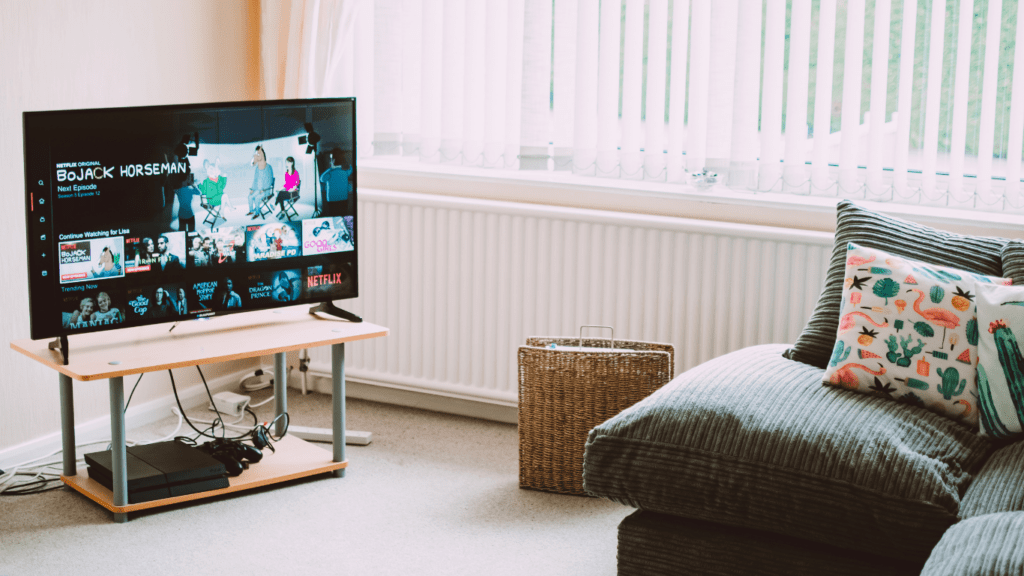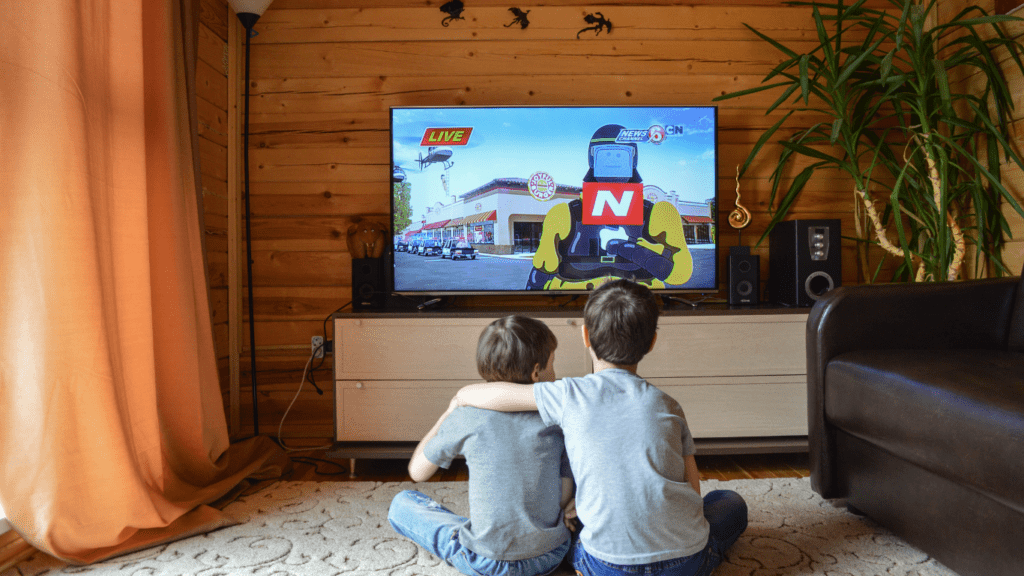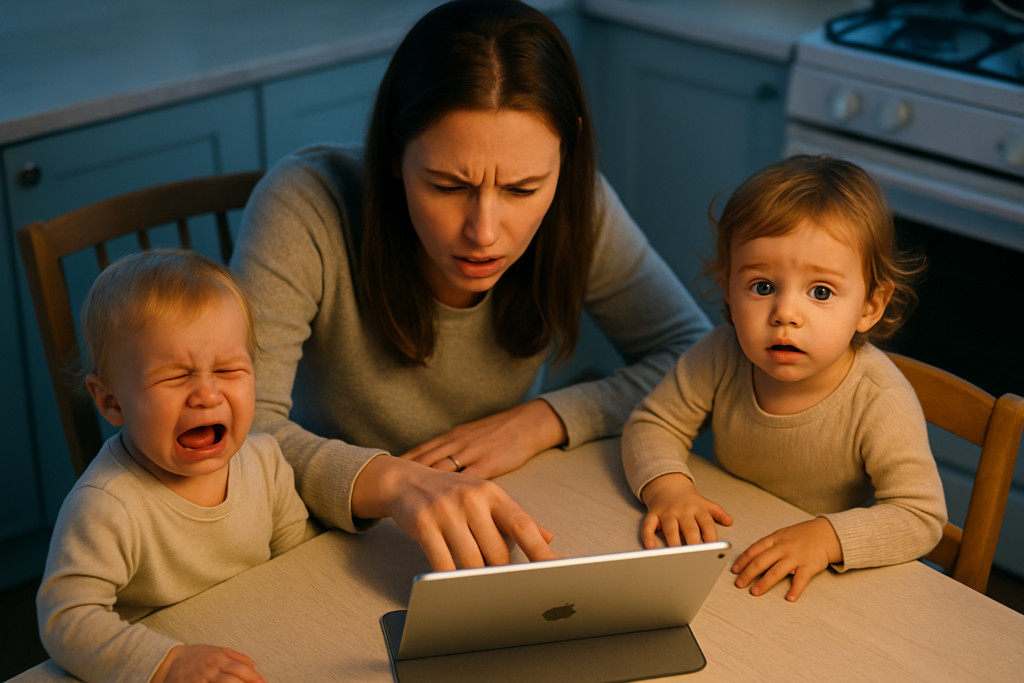Understanding Screen Time
Screen time refers to the amount of time spent using devices with screens like smartphones, tablets, computers, and TVs. Children today are increasingly exposed to these devices, making it essential to understand what screen time entails.
Definition of Screen Time
Screen time includes any activity involving a screen, both passive and interactive.
- watching TV
- playing video games
- browsing the internet
Are typical examples of screen time activities.
Interactive screen time, like educational apps, involves engagement and can differ from passive activities like watching videos. It’s crucial to differentiate these types as their impact on mental health might vary.
Current Screen Time Statistics for Children
Current data shows that children spend an average of 4-7 hours per day on screens. According to the American Academy of Child & Adolescent Psychiatry, this number can exceed 7 hours among teenagers.
Screen time has notably increased due to the accessibility of devices and the surge in online learning, especially after the COVID-19 pandemic. Excessive daily screen time has raised concerns among parents and health professionals about its long-term effects on children’s mental health.
The Relationship Between Screen Time and Mental Health

Screen time can significantly impact children’s mental health. Numerous studies have evaluated how different aspects of screen time link to various mental health outcomes.
How Screen Time Affects Attention and Sleep
Excessive screen time often disrupts attention spans. A study by Twenge and Campbell (2018) found that children who spent more than two hours daily on screens were more likely to exhibit ADHD symptoms. When kids focus too much on screens, they struggle to maintain attention during non-digital activities.
Sleep disturbances are also common. Blue light from screens interferes with melatonin production, which affects sleep cycles. Research by the National Sleep Foundation indicates that children using screens before bedtime took longer to fall asleep, slept fewer hours, and experienced poorer sleep quality.
The Role of Screen Content in Emotional Development
The content children view on screens plays a pivotal role in their emotional development. Educational apps and programs designed for learning can promote cognitive skills and positive social behaviors. Conversely, exposure to violent or inappropriate content can lead to increased aggression and fear.
Age-appropriate content supports healthy emotional development. For example, shows teaching empathy, cooperation, and problem-solving help children develop these crucial skills. Monitoring and curating the type of content children consume become essential in fostering positive mental health outcomes.
Potential Benefits of Screen Time
While concerns about screen time’s negative effects are valid, it’s essential to recognize the potential benefits of screen time on children’s mental health.
Educational Apps and Cognitive Growth
Educational apps help enhance cognitive growth in children. Studies from authoritative sources like the American Academy of Pediatrics highlight that apps designed with educational purposes can improve children’s literacy, numeracy, and problem-solving skills.
For example, apps focusing on phonics can help young children learn to read, while math-based games can make numeracy fun and engaging. Interactive content stimulates critical thinking, aiding cognitive development. Parents should choose high-quality educational content to maximize these benefits.
Facilitating Social Connections
Screen time also facilitates social connections among children. Digital platforms offer opportunities for kids to interact with peers, especially for those who may struggle with in-person socializing.
Video calls, social media, and interactive gaming help maintain friendships and build new ones. For instance, multiplayer games and social networks let children collaborate and communicate, fostering a sense of community and belonging.
Active parental involvement ensures appropriate use, promoting positive social interactions.
Risks Associated with Excessive Screen Time
Research consistently shows the various risks excessive screen time poses for children. Here’s a closer look at some specific areas of concern.
Links to Anxiety and Depression
Excessive screen use correlates with higher rates of anxiety and depression among children. Studies in clinical psychology journals report children who spend more than 3 hours daily on screens are more likely to exhibit symptoms of anxiety and depression.
For instance, they often experience increased irritability and mood swings. Exposure to negative social media interactions and cyberbullying also exacerbates these conditions.
Impact on Physical Health and Behavior
- Extended screen time negatively impacts children’s physical health and behavior.
- Data from pediatric research indicates kids with high screen exposure experience disrupted sleep patterns, leading to fatigue and decreased academic performance.
- Increased sedentary behavior due to screen use heightens the risk of obesity and associated health problems.
Additionally, heavy screen use correlates with behaviors like social withdrawal, reduced physical activity, and increased impulsivity.
Guidelines for Healthy Screen Time
Recommendations by Health Professionals
Health professionals generally recommend limiting screen time for children to avoid potential mental health risks.
For preschool children aged 2-5, screen time should not exceed one hour per day, while older children and teens should keep screen use under two hours, according to the American Academy of Pediatrics.
Ensuring screen activities are educational or promote physical activity is essential since passive consumption can increase risks of anxiety and depression.
Tips for Parents to Manage Children’s Screen Use
Setting clear rules about when and where screens can be used helps manage screen time effectively. For example, creating tech-free zones in bedrooms and during meals fosters healthier habits.
Encourage regular breaks, like the 20-20-20 rule, suggesting a 20-second break to look at something 20 feet away every 20 minutes of screen use. Engaging in co-viewing and discussion about the content ensures children absorb positive content and learn critical thinking skills.
Additionally, promoting non-screen-related activities, such as outdoor play, reading, and hobbies, supports balanced development and mental well-being.

 Hazeliin Davidsoninn, the founder of Toddler Health Roll, is an insightful article writer with a passion for children's health and well-being. Her writing reflects a deep understanding of the challenges parents face when raising toddlers, offering practical advice grounded in the latest pediatric research. With a keen eye for detail and a compassionate approach, Hazeliin's articles provide parents with the tools they need to nurture their children's physical, mental, and emotional health.
Beyond her expertise in child health, Hazeliin's writing also delves into the complexities of toddler nutrition, travel with young children, and effective parenting strategies. Her dedication to sharing valuable knowledge with her readers has made Toddler Health Roll a trusted resource for parents seeking guidance on raising happy, healthy toddlers.
Hazeliin Davidsoninn, the founder of Toddler Health Roll, is an insightful article writer with a passion for children's health and well-being. Her writing reflects a deep understanding of the challenges parents face when raising toddlers, offering practical advice grounded in the latest pediatric research. With a keen eye for detail and a compassionate approach, Hazeliin's articles provide parents with the tools they need to nurture their children's physical, mental, and emotional health.
Beyond her expertise in child health, Hazeliin's writing also delves into the complexities of toddler nutrition, travel with young children, and effective parenting strategies. Her dedication to sharing valuable knowledge with her readers has made Toddler Health Roll a trusted resource for parents seeking guidance on raising happy, healthy toddlers.
